 Philips CPO Scott Schwartz on improving
Philips CPO Scott Schwartz on improving






 Philips CPO Scott Schwartz on improving
Philips CPO Scott Schwartz on improving







Companies who are outperforming their peers have either adopted cutting-edge, best-of-breed digital solutions or are planning to do so imminently
Given the need for procurement to deliver more with less during existing economic challenges, it’s going to be increasingly imperative for procurement leaders to invest in the digital capability of their teams.
These cutting-edge digital solutions will also help attract the top-tier of today’s workforce, which demands a seamless, consumer-like experience in their professional as well as personal lives.

To drive adoption of this essential new technology, organisations must create a culture of digital comfort and reliance, while ensuring that the solutions and platforms they start using are simple and intuitive for both procurement teams and business stakeholders.
Companies with cultures that embrace new technology and operating models will not only survive but also thrive, while those who fail to do so will fall behind.
There is neither any space, nor time for technophobia when it comes to procurement.
Agility means adapting to changes and pressures in a timely fashion, and if your organisation is to prosper, it must operate with this agility as part of its culture.
ILKHAN OZSEVIM
“As procurement promotes this new culture of transformation and agility, its people must embrace new skills”


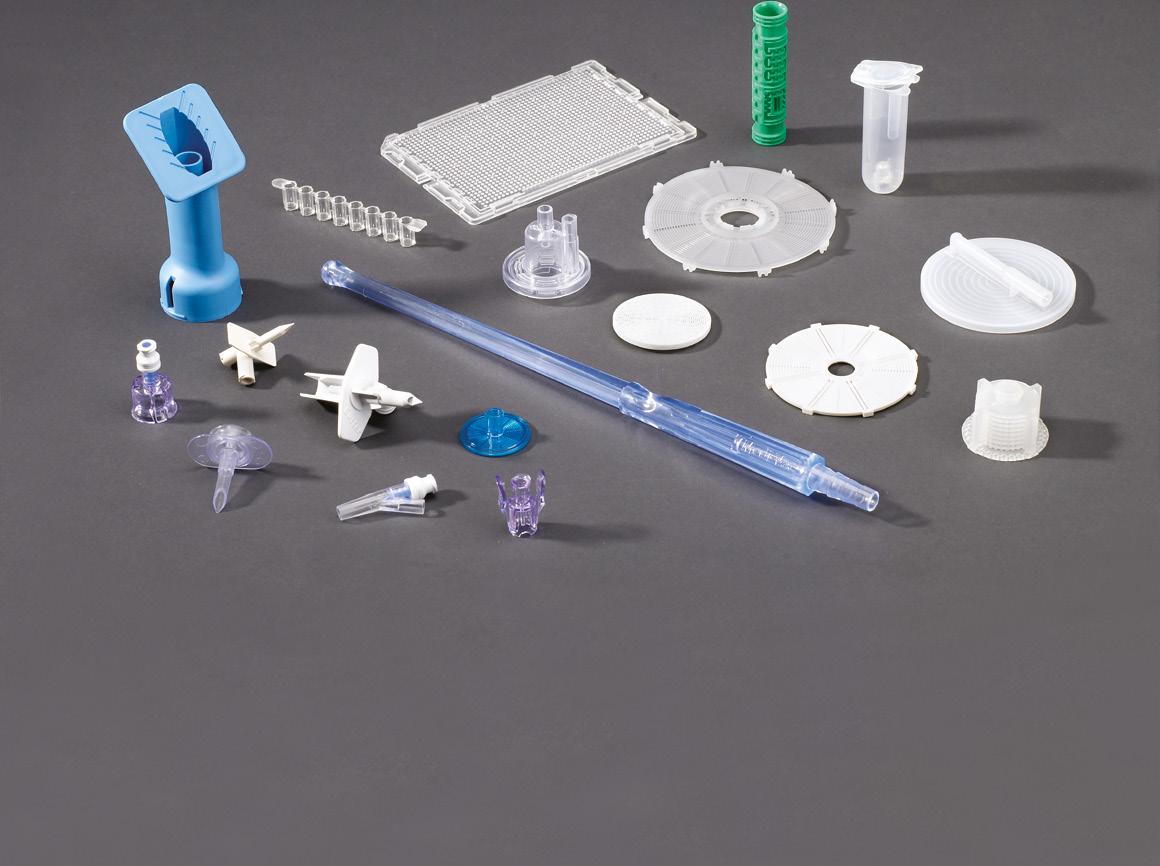
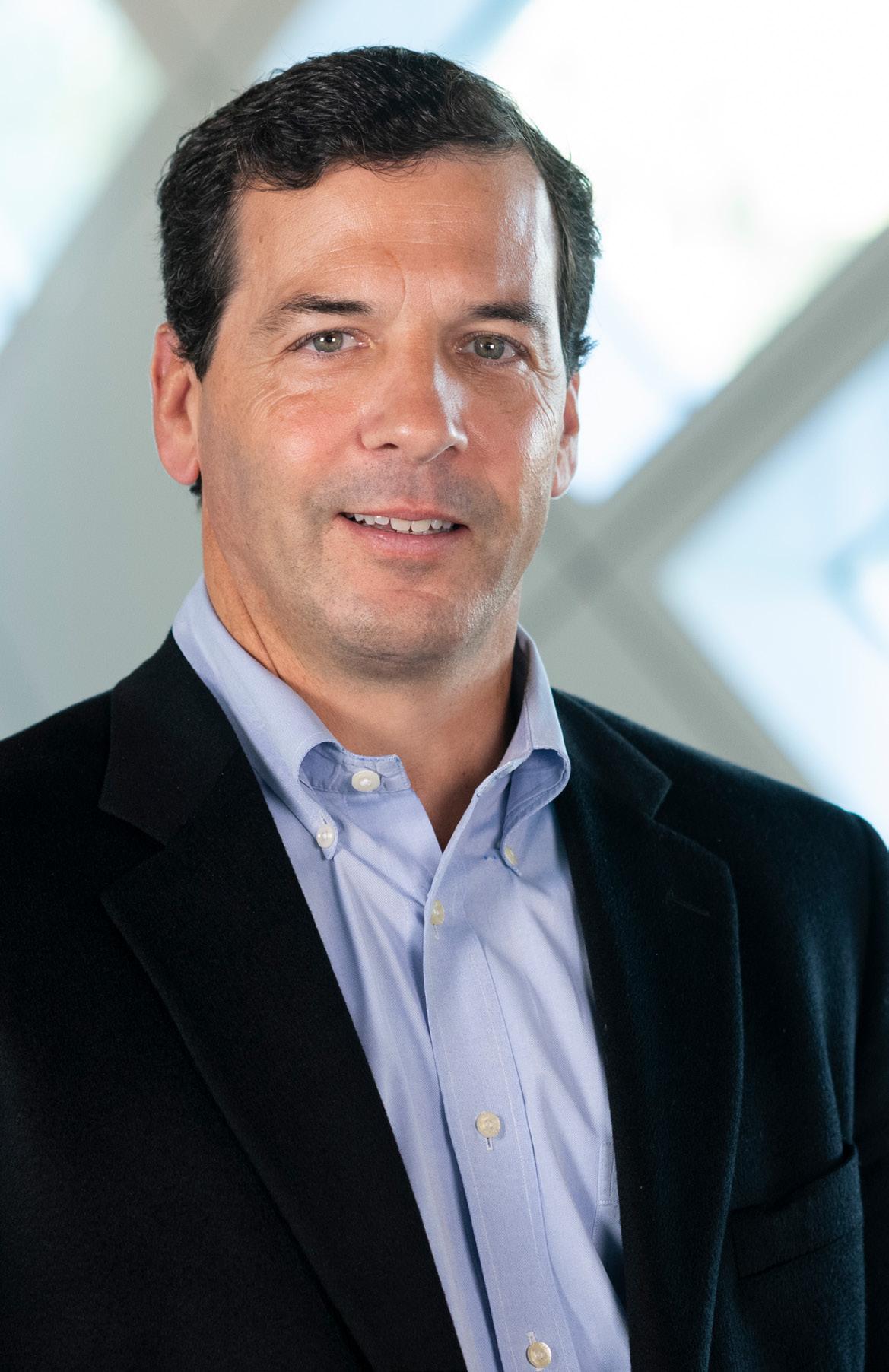




At this time of year the town of Blackpool in northwestern England is lit up in spectacular fashion by tens of thousands of decorative lights. The Blackpool Illuminations have been a major attraction since 1879.
In a bid to be greener, the town began switching to LED lights. Now, the local authority is also procuring green electricity from renewable resources, including wind, small-scale hydro, and biogas. This saves 420 tonnes a year in CO2 emissions.


action to instil an ethos that
data-first
Global shifts are impacting procurement leaders’ expectations about the next three years:
Percentage who expect changes in their operating model
“100% of travel managers we surveyed expect their jobs to become more challenging in the next 12 months”
“If
now,
target
earth
of
Percentage who believe procurement roles will be improved by the latest tech
Discover five ways procurement can combat maverick spend in their organisation, according to leading AP automation and payments software provider Medius.
With 40% of businesses investing in software to tackle supply chain and procurement issues, discover what is at the top of the investment agenda for CPOs.
Xyloyiannis
what
Halahan
Companies who are outperforming their peers have either adopted cutting-edge, best-ofbreed digital solutions or are planning to do so imminently.
Globality recently partnered with ProcureTech for a comprehensive survey on the future of procurement. The survey gathered insights from nearly 200 leaders across sector and company size, and highlighted that more aggressive and advanced digital transformation will be a top priority over the next three years, as procurement leaders adopt new technologies to inject agility into their operating models and react quickly to dynamic economic, environmental and geopolitical situations.
The results showed that digital transformation and new ways of working will reshape procurement, with 90% of respondents expecting a relative or significant change in their operating model over the next three years; 63% said that the role of procurement itself will be changed for the better by leveraging stateof-the-art technologies.
ELECTRIC Schneider Electric has taken first place in CIPS awards with its Zero Carbon Project, that is said to have influenced an estimated 1,000 of its partners.
Global biopharma company GlaxoSmithKline has launched a sustainable procurement programme at Scope 3 level, that requires all suppliers to implement by 2023.
The UK government’s Procurement Bill is being challenged for its "vague wording" by a spokesperson for charity think tank, ‘New Philanthropy Capital’, accusing it of “disregarding social value”.
The EC is proposing a major overhaul of EU supply chains through the Single Market Emergency Instrument. Is the securing of the supply chain by one region at the expense of another?
In his seminal work, English cleric, scholar and economist Thomas Malthus’ warned about the implications of an ever-increasing population. “The power of population is indefinitely greater than the power of the earth to produce subsistence for man,” he said. His words were prompted by the fact that, just 750 years, the global population rocketed from 400mn to 1bn.
The early 1970s was a time that saw a rise in scientific and ecological methods, and a widening understanding of the human impact on the environment
In that context, the conference, held in Stockholm, declared: “To defend and improve the human environment for present and future generations has become an imperative goal for mankind.”
The Commission highlighted consumption trends and the challenge of bringing billions into the mainstream economy: It said: “Sustainable development requires the promotion of values that encourage consumption standards that are within the bounds of what’s ecologically possible, and to which all can reasonably aspire.”
2003Launch of the UN Marrakech Process on Sustainable Consumption and Production
For nearly a decade prior to this event, a coalition of willing countries had been working to promote sustainable consumption and production, especially through policy guidelines and in emerging economies. The event was launched at the first international expert meeting organised by the Sustainable Development division of the UN Department of Economic and Social Affairs, and the UN Environment Programme.
UN Conference on Sustainable Development
The Marrakech Process 10-year framework was finally adopted as one of the few successes of the controversial Rio+20 Summit.
Deloitte demonstrates its commitment to the Asia Pacific region, with an estimated US$500mn of investment in China and Japan. In 2018, Deloitte Asia Pacific is established, giving it the ability to serve the largest global clients.
It would have been impossible for our ancestors to foresee that human consumption might be a threat to the environment, and that careful husbandry would be needed to preserve our planet. Sustainable consumption is a relatively modern phenomenon, but our future depends on it. So let’s take a look at how it developed.
Paul Robertson is Global Category Director, Procurement, Retail Assets & Advanced Mobility, and his work means forging crucial supplier partnerships and turning new supply chain ideas into a reality

Paul Robertson is an innovator who is focused on the biggest questions at the heart of consumer energy transition. As well as challenges, changes in the energy sector have created many opportunities for bp’s procurement professionals, and at bp Robertson and his team are key to driving change and discovering new areas of business activity.
These include everything from electric vehicle (EV) charger installations and the development of commercial hydrogen projects, to a programme of initiatives to reduce bp’s carbon footprint, in collaboration with other businesses and bp’s suppliers.
Regarding bp EV strategy, Robertson and his team is focused on the roll-out of the company’s Advanced Mobility Strategy, which will see 100,000 EV electric vehicle chargers being installed worldwide.

“When it comes to creating and developing supply chains for new and evolving equipment and services there is no rulebook.” says Robertson. “Instead, we’re establishing a baseline for how we procure what we need to make the energy transition a reality.”
He adds: “But the answers don’t lie in procurement. I’m seeing new levels of business collaboration that we’ve been striving after for years.
“We’re working across bp on planning, value engineering and to establish closer supplier partnerships, all while making more significant commitments to the market, both in terms of volume and through collaborations and joint ventures.”
Procurement’s strategic drive towards sustainability is just one example of how the pandemic has changed the function. PreCovid, procurement was seen as being about little more than cost control, but Roberston confirms that these days cost issues make up only a small part of his work. “It’s all about managing risk,” he says.
In recent months, Roberston has observed unprecedented levels of inflation across the price of equipment, services and logistics. Supply chain disruption has also been a tremendous challenge, he says, with lead times for products increasing from overnight, pre-pandemic, to months. “In extreme cases, wait times can be years,” he says.
Building the procurement skills bp needs Robertson and his colleagues are working in an area of the business that is relatively new, and so are making ‘first of their kind’ procurement decisions.
Building on 20 years’ category management, sourcing, and supplier management experience, Roberson is seeking to establish “a highly capable and knowledgeable team that can support bp’s electric vehicle charging ambitions”.
Roberston has more than 20 years’ experience at bp. In 2001, after university, he joined the company, working in Production and Operations – the historical core of bp. He then moved into procurement in the oil refining wing of the business.
More recently, his career has mirrored bp’s transformation from international oil company to integrated energy company, and seen him take on roles to support bp’s ambition to become net zero by 2050, or before.
“It’s an exciting time to be working in the industry,” he says. “Meeting the needs of an ever-increasing population, against the backdrop of an ever-changing geo-political
situation, while keeping environmental impact front of mind, is complex.
And what about aspiring procurement professionals? Does he have any advice on this front?
“I believe that a deeper technical understanding of the industry is crucial,” he says. We’re no longer tactical buyers. Instead, we’re working within businesses to support strategic decision making, establish supply chain reliability and drive innovation.”
He adds: “A good handle on how the relevant supply chains operate, and the risks associated with them, is key. Only then can we create the category strategies that meet bp’s needs.”
Robertson also stresses the importance of finding people with the commercial skills to help bp “develop positive relationships with stakeholders and suppliers”.
“This means understanding the importance of the customer, and feeling comfortable making decisions proactively in a fast-paced environment,” he says.
He adds: “bp invests heavily in creating opportunities for employee growth, helping procurement teams learn these new skills and expand their horizons”, Robertson emphasises.
“At bp it really feels like procurement has finally been given a seat at the table. Setting high standards for the rest of the procurement industry also means shaping the world’s journey to net zero.”
» My name is Cristina Stanca-Mustea and I am part of the Customer Success team at Scoutbee. I support our clients in achieving their procurement goals, as well as enhancing their knowledge of relevant markets, suppliers and future trends.

I also work alongside our data and product teams on implementing sustainability features into our solutions and sizing key opportunities for our customers in this field.
» My interest in procurement started several years ago when I was working for UNESCO in Paris, on projects around the UN Sustainable Development Goals. In the discussions rounds with stakeholders, it became obvious the interconnectivity of our world is a decisive factor.
Not a single country nor business group on the planet can achieve the major transformations required by these goals by acting alone. There is a need for massive joint efforts, and the procurement industry can play a determining role in this.
I’m working towards an MBA focusing on business sustainability and ESG, and am exploring the role of data in driving successful sustainability initiatives.
» There are many things that I find fascinating about procurement, especially strategic sourcing. So many of our customers at Scoutbee have a global reach which gives me insight into a great number of markets and businesses worldwide. Another thing that fascinates me is the snowball effect towards greater sustainability in procurement. Supply chains impact all aspects of our lives, and a single

positive initiative can have a huge impact along the entire chain.
Procurement has also given me the opportunity to work with so many talented people from all over the world. I have 100 colleagues, who come from 40 countries and over a third of them are female.
Our BRAVO programme aims to solve this issue. This is a global network dedicated to helping women get the resources they need to advance in their careers and shape a better future. It’s paramount that women have the mentoring, peer-topeer guidance, and coaching they need to tackle the inequalities they still face in the workplace today.
Helping women in our profession close that gap by providing them with the skills and knowledge they need is what BRAVO is all about.
» Multiple industries are faced with the challenge of driving diversity and inclusion, at all levels. Although there is an abundance of D&I initiatives, results lag behind on inclusion of gender, race, ethnicity, demography and disability.
According to a Gartner 2021 survey, women comprise about 40% of the supply chain workforce. Yet one needs some context. This relatively high number does not mean greater representation of women at leadership level. On the contrary, the number of women in such roles has fallen, according to the same report.
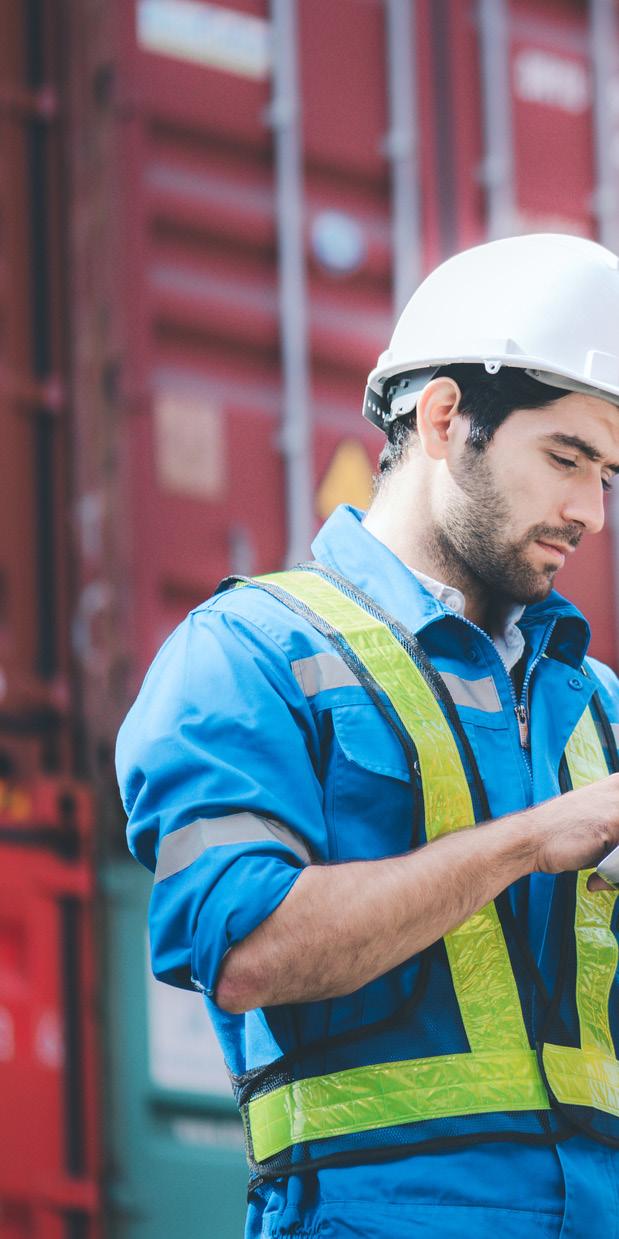
I believe that some of the problems around lack of diversity and inclusion arise from the absence of a clear pathway to leadership roles, a lack of
mentorship and an over-reliance on narrow educational backgrounds for procurement roles.
One solution is to create internal pipelines of talent. We need to change hiring strategies, to account for inclusion and diversity in all areas, as well as actively supporting women to take up leadership roles.
Just as important, we must compensate talented female professionals fairly for such roles.
» It’s probably reimagining adaptation to risk. Procurement professionals are well-versed in addressing all manner of risk.

But it’s complex; ours is a changing world. Take the war in Ukraine. Organisations need to know where they stand on this, not just as an actor in its industry, but in terms of supporting democracy and freedom. Supply chains are effectively the glue of well-
functioning societies, and procurement is not accustomed to dealing with such complex moral questions and pressures. Such moral imperatives will become more commonplace for procurement professionals. Sustainability is another prime example. Governments, non-profit organisations and consumers are pushing for greater transparency and standards on this front. Such a call for action cannot be ignored.
“MORAL IMPERATIVES WILL ONLY INCREASE FOR THE PROCUREMENT WORLD”BizClik
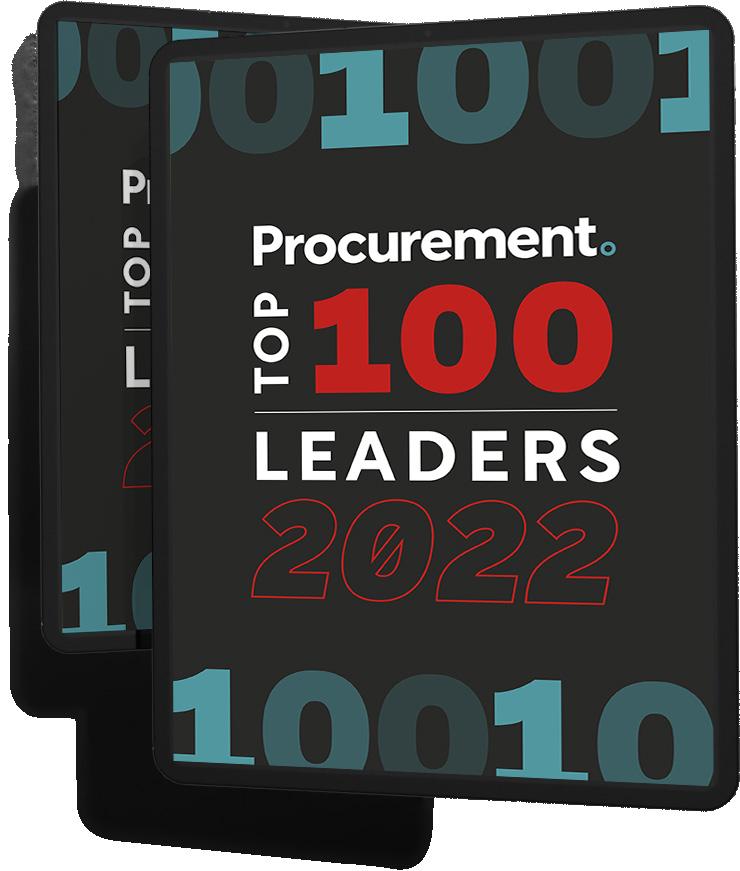




BY: MIKE SADR & CRAIG KILLINGBACK
WRITTEN BY: NEIL PERRY
 Scott Schwartz: Chief Procurement Officer & Head of Sustaining Engineering, Royal Philips
Scott Schwartz: Chief Procurement Officer & Head of Sustaining Engineering, Royal Philips
There can be few better opportunities to learn about your products and your customers than seeing them in action in the hospital or clinic. Scott Schwartz from Philips recently had that opportunity at a hospital appointment, where he saw the global health technology company’s ultrasound systems being used first hand. As Chief Procurement Officer and Head of Sustaining Engineering at Royal Philips, he knows all too well how important their products are to people all over the world.
“The beauty of what we do here is that we make products and solutions which have a direct connection to our family and friends. Our products help them and other people around the globe improve or save their lives. That’s really inspiring and has motivated me throughout my career in medtech,” says Scott, who has been recently appointed
as Chief Procurement Officer at Philips, in addition to his Sustaining Engineering Lead responsibility. “We help improve the workflows in hospitals, lower the cost of care and have a direct impact on society. That greatly contributes to my job satisfaction: it's all about helping people and improving their life and wellbeing. At some point of our life, we are exposed to our own products either ourselves or our family members, friends or colleagues are. That makes our task very real and puts a face to it.”
This purpose-driven motivation is what Scott also likes to drive into his own team. He was able to build a purpose-driven, high-performance team that understands the impact Philips’ products and solutions have on the end user. Driving strategic ideation into a strong rigour in execution is a valuable mantra for success.
“The key here is that, first, you have really talented, creative people that are always curious to dig deeper, to dig for more – and I think that's the culture that we are trying to create here, that rigour, that depth, that curiosity to find more,” he says. “That is the foundation of trying to find these improvement ideas.”

As Chief Procurement Officer and Head of Sustaining Engineering at Philips, Scott Schwartz highlights how an end-to-end approach to strategic ideation and drive into execution together with strategic partners helps Philips to fulfil its purpose: to improve people’s health and wellbeing through meaningful innovation, to lower the cost of care and improve the patient/customer experience.
Scott is very clear on the importance of talent in his own team, but for him, the team doesn’t end at the walls of Philips. He recognised in past company experiences how important it is to team up with strategic partners in the value chain to do things first time right and avoid higher costs in later product lifecycle stages. It is therefore important for Philips to share their purpose as well with their strategic suppliers and connect them to the outcomes desired for the customers and patients.
“I think it's really valuable to hear different users talk about your products,” he says. “A lot of times, what you believe they're going to say is not actually what they end up saying. For me, it was really insightful to talk to the technician because you are thinking they are going to talk a lot about the actual diagnostics, the clarity of the imagery and the quickness of the machine, which are things we are driving
at the company. But instead, a lot of times you end up hearing about the basic ergonomics and usability of the machine. It's important to see that there is more to the overall satisfaction of the customer than just the traditional features you are driving.”
Scott explains that having the customer’s point-of-view helps in ensuring that they are providing market-leading technology that makes a tangible difference to the lives of both patients as well as the healthcare professionals using the equipment.
“We're making these products to help people; real people and real faces are using our products. So that purpose, that responsibility, is constantly reinforced in the organisation and I'm trying to continually implement this outside-in view in the organisation. We want everybody thinking outside-in. What does this product do, and as I understand what it does, how do I improve that?”

Scott Schwartz
Scott Schwartz is currently the Chief Procurement Officer and Head of Sustaining Engineering. He is responsible for the execution of the E2E Procurement & Supplier Management strategies from New Product Development to Life Cycle Management to support key business strategies across all business groups of Royal Philips. The Procurement & Engineering team have a strong engagement in Advanced Development & New Product Development connecting the supplier ecosystem to drive innovation, productivity and quality. In addition, he is responsible for the sustaining engineering team for the Supply Chain & Operations group driving continuous improvement on the marketed products. The Procurement & Engineering team links the Commodity Strategies to the Business Strategies creating local impact and global leverage. Scott joined Philips in 2014 as the Head of Procurement Engineering for the Philips Healthcare businesses.
Prior to Philips, Scott worked for Boston Scientific for 18 years where he held leadership roles in Product Development, Process Development, General Management and Procurement. Prior to Boston Scientific, Scott started his career at 3M Company as a product/ process development engineer.
Scott has a BS in Mechanical Engineering from MIT, a MS in Mechanical Engineering (Statistics Minor) from University of Minnesota, and a MBA from the Carlson School at the University of Minnesota.

We understand medical customers. Since 1999, Kimball Electronics has served the medical market, manufacturing millions of medical devices, medical electronic assemblies, and complex full medical devices. By leveraging our focused medical core competencies, decades of experience, and customer-aligned global footprint, we’re ‘Creating Quality for Life’.
Learn more about how Kimball Electronics is ‘Creating Quality for Life’ for our medical industry customers. Learn more




Kimball Electronics used the pandemic to bring its global facilities closer together to build life-saving equipment around the world for the new normal.
The electronics manufacturing company, Kimball Electronics, is expanding, despite the global supply chain crisis, and the new normal. Steve Korn, the President of Global EMS Operations, is ready.
“I’m responsible for all the manufacturing of those facilities, as well as our global supply chain and an IT team, as well as a finance team that supports those operations.”

There are a lot of people reporting to Korn and he knows each of them is a vital employee. “Our people are critical to us and that’s what separates us from our competitors,” says Korn. “We spend time making sure that we have the best work environment we can have.”
Kimball Electronics manufactures electronics for products across several markets, including automotive, industrial, medical, and public safety.


“It’s really exciting working across those different industries,” says Korn. “The number one thing for us is in each one of those industries, we manufacture very reliable products. If you’re going to a
hospital and you have an AED device or a monitoring device or a ventilator, the last thing you would want is for it not to work.”
As Kimball Electronics manufactures for the medical and public safety markets, the company has adapted over the pandemic.
“I think a couple things changed us, such as supporting our medical customers,” says Korn. “We did a lot of work for Phillips in building ventilators and building BIPAP equipment, it really helped us focus more into the medical space and public safety.”
Over the pandemic, Korn has had the time to develop professional skills. “I have continued to improve my communication skills — for how to develop communicating virtually and in writing.” Virtually or officebased, Kimball Electronics is ready for the new normal.
The sector comes with a degree of public responsibility, and, as someone who has worked in medtech for the vast majority of their career, Scott says it is something with which you foster a deep connection.
“I wouldn't go anywhere else or to any other sector because the beauty of what we do here is that we make products and solutions which have a direct connection to our family and friends.” Scott’s route to Philips has taken him across different business roles since completing a mechanical engineering degree at MIT. The first career step was to 3M Company

“We want everybody thinking outside-in. What does this product do, and, as I understand what it does, how do I improve that?”
after graduating. He completed a Master’s degree in mechanical engineering and an MBA at the University of Minnesota. Scott says that his goal was always to be a leader of technical people, so he needed to be sure his technical capability was strong to have credibility in an engineering environment, but also having the MBA to bring a broader business view to the table. He then spent eighteen years at Boston Scientific working across product development and supplier engineering, providing him a wide scope of experience to manage products from endto-end during their development.
Scott believes the structure at Philips
Procurement and Sustaining Engineering is one of their key strengths, as it allows them to have more of an end-to-end overview of products, from inception to delivery. As well as the traditional procurement responsibilities that fall under his responsibility, there is also an engineering arm connected directly to procurement, which allows them to drive the overall strategy through partnerships with their supplier base.
“It’s a unique combination compared to most other procurement organisations that you would typically see,” he says. “We are also heavily involved in new product



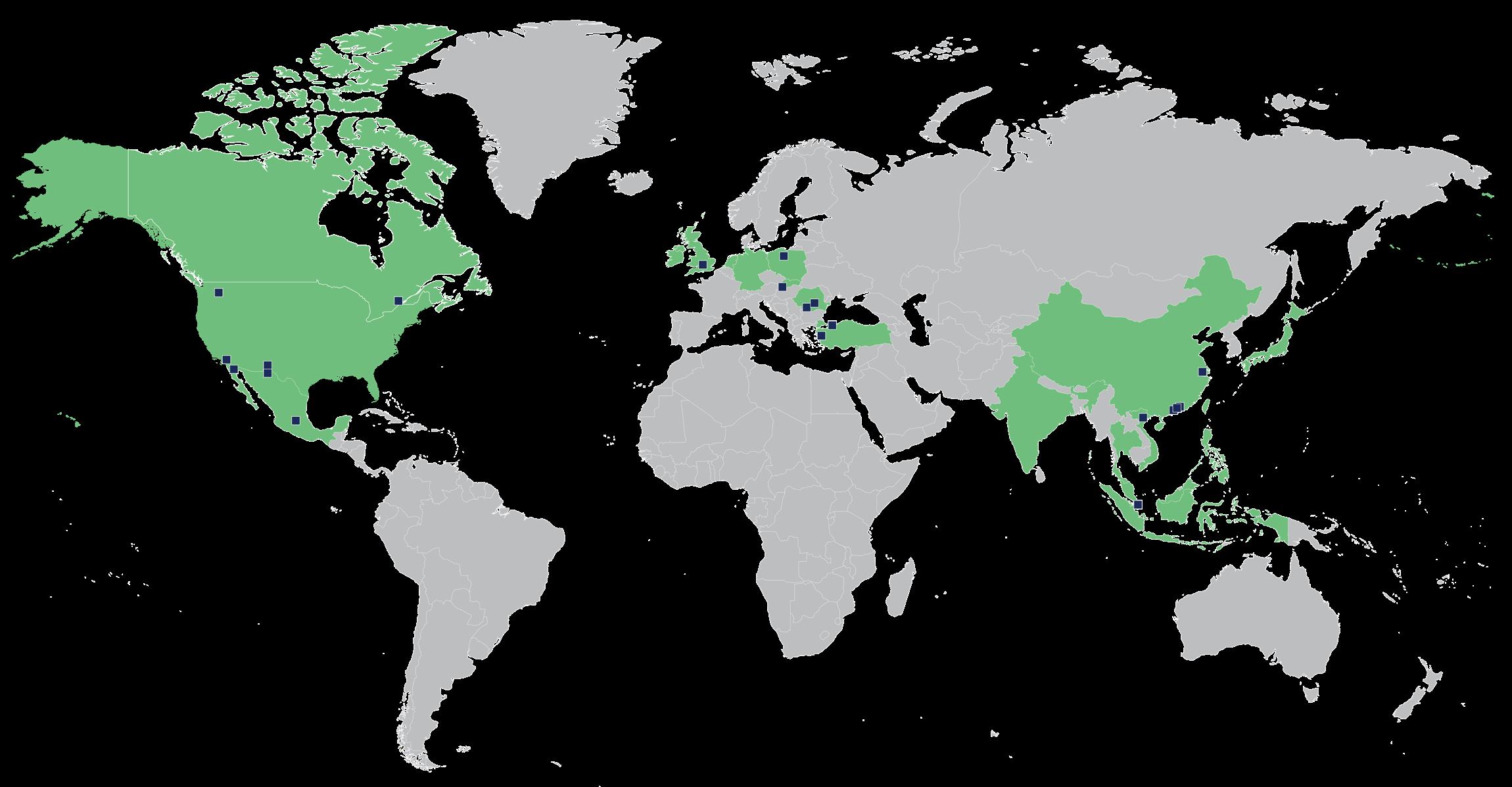






















Made up of 8,000 people, in 19 factories, across three continents, “Volex’s global footprint is unparalleled in our industry,” says Paul Bullock, COO Europe, Volex.

Since 2004, Volex has been supplying Philips with its services. “We started providing cables for their defibrillator products,” says Bullock. “Over the last 18 years, that relationship has grown to be a global strategic partnership, underpinned by three pillars: exceptional quality, global footprint, and scale.”
“We have seven factories right now that are approved to the ISO 13485 medical standard, and recently, with Philips’ promotion and support, our Tijuana, Mexico factory was able to achieve MedAccred accreditation, becoming the first cable and wire harness accredited supplier in the whole of Mexico, which was a fantastic achievement,” says Bullock.
Committed to reducing lead times, increasing their market reach, and getting closer to the end customer, local supply and regionalisation of supply chains is becoming increasingly important for Philips.
“Soon we will be supplying Philips from eight locations, with the addition of India.
Volex will be investing in a new factory in the Pune region, close to Philips, supporting the company’s localisation efforts for their supply chain and facilitating their growth plans for the region,” says Bullock.
The scale of Volex affords its customers like Philips to have the confidence that they are working with a global supplier with a worldwide partner ecosystem and global experience. “Volex currently supplies Philips with over 2,200 part numbers, that contain 6,000 raw materials into 20 different Philips locations, which is a huge portfolio of parts with a huge amount of complexity,” says Bullock.
“We manage that expansive portfolio by engaging closely with Philips at a local, regional, and global level through our factory teams, and the executive team, to give Philips the confidence in the quality delivery and service that they’re getting at multiple touch points.” adds Bullock.
“As Philips continues to develop its lifesaving products, Volex will be there as a trusted global integrated manufacturing partner,” concluded Bullock.
development – which I think is common with other procurement organisations – but we are doing it at an even more technical level, partnering with the R&D organisation and getting involved very early in that new product innovation cycle.”

This set up allows Philips to accelerate the strategic execution and drive strategic initiatives from the Procurement perspective, whether that is supply base mobilisation, innovation, cost down and quality up activities. Projects focused on quality, productivity, resilience, or innovation can be driven with great speed in partnership with the supply base. This makes supplier performance management truly end to
SCOTT SCHWARTZ CHIEF PROCUREMENT OFFICER & HEAD OF SUSTAINING ENGINEERING, ROYAL PHILIPSend. It is much faster and more efficient to have the needed resources in one team. By having the internal team joining forces with strategic suppliers, Scott aims to foster a culture of collaborative disruption to drive into fast, customer-oriented outcomes.
Scott has been at Philips through a time of transformation, as it pivoted further into a health technology company, which now is one of the world’s largest health technology companies. It has been a long journey for a company that started in 1891 with its namesake, Frederik Philips and his son Gerard, producing electrical lighting products in an Eindhoven factory before diversifying into home appliances.
“It is key to have these smaller sets of suppliers that are more strategic as we interact with them”







At USI, we deliver global projects within local supports. We bring up the possibility of miniaturiza�on and provide diverse solu�ons from wireless communica�on to medical devices. Most importantly, we share the same values with you.



“When I first arrived at Philips, it was basically a conglomerate with a healthcare technology business, the heritage lighting business, personal health and a domestic appliances business. Over those eight years, we've actually transformed pretty impressively in such a short time into a truly health technology company – so, spinning off our lighting business, divesting our domestic appliance business and then creating one of the largest health technology companies in the world.”
“The industry needs to transform from working on hardware alone to driving cost reductions, simplicity in workflow, and improved outcomes for patients. To achieve those ambitious goals, you have to bundle technologies, bring hardware and software together to create solutions that truly solve problems. This requires the procurement organisation to transform as well. It is not about hardware alone anymore. It is about bringing in suppliers that help with the innovation on those solutions which is easier to say but not so easy to be done. Driving innovation on hardware is a little bit more concrete than driving ideation on a solution
that is not easy to conceptualise and requires a lot of pieces to be put together, and that is the challenge we face: how do you bundle solutions that truly improve outcomes, reduce costs and improve the workflow in clinics and hospitals?”
A vital part of that transformation has been the relationship Philips has with their partners and suppliers, which Scott and his colleagues are leveraging to deliver more solutions that improve outcomes, reduce costs, and optimise workflows in clinics and hospitals.
 SCOTT SCHWARTZ CHIEF PROCUREMENT OFFICER & HEAD OF SUSTAINING ENGINEERING, ROYAL PHILIPS
SCOTT SCHWARTZ CHIEF PROCUREMENT OFFICER & HEAD OF SUSTAINING ENGINEERING, ROYAL PHILIPS
“Having a strong partnership with our suppliers is crucial, allowing us to connect the suppliers to our problems, thus connecting the supplier innovation capabilities to our problems, to actually leverage a much broader ecosystem to identify these step-up improvements.”
“The culture that we are trying to create here is that rigour, that depth, that curiosity to find more”
By using an early engagement approach with their suppliers, Scott believes it gives them the best possible chance of delivering solutions and step-up improvements to their products, and, with his role having a larger overview of development, it can bring the best out of those partnerships.
“Everybody thinks that every procurement leader says, ‘We are going to leverage the supplier ecosystem and bring the suppliers closer to our activity’. It’s easy to talk about the concept, but it's very hard to do in practice. We have done some of the structural things, like consolidating our supply base to strategic suppliers that have strategies and visions lined up with Philips’
strategy and vision. I think that it is key to have these smaller sets of suppliers that are more strategic as we interact with them.”
It is this culture of trusted collaborations embedded in these partnerships that allows a stronger bond between the two for the benefit of both parties, and, ultimately, for the customers and patients who use the technology. Scott is confident that the company’s top strategic partners feel listened to and empowered to play an active role in the process of product development.
“That's the key – that it’s a two-way street,” he says. “They are partners and so we have confidence in them, but it's also our responsibility to treat them like strategic

“What is really inspiring about this whole industry is that we are helping people”
partners and give them benefits for being our strategic partners. Whether that is access to our new product development opportunities or focusing on other creative innovations that we are working on, we want them to feel part of Philips.”
Scott also says that they strive to make sure there is a flow of communication and innovation coming from their suppliers for productivity, quality, performance, and resilience. That is the benefit of connecting a strong procurement organisation with a sustaining engineering capability to drive execution.
All those ideas permeate through product development cycle to the consulting
rooms, clinics and wards of hospitals and clinics around the world. It was following his appointment that Scott got to witness the benefits of that approach first hand and see staff interacting with their innovations.
‘It was just very insightful to talk to the technician and ask him about Philips and our products – that is what it's all about. Not only the connectivity to the personal experience you have with our products, but also seeing that our products are perceived as delivering on their high-quality premise. And that's satisfying as well.”




Globality recently partnered with ProcureTech for a comprehensive survey on the future of procurement. The survey gathered insights from nearly 200 leaders across sector and company size, and highlighted that more aggressive and advanced digital transformation will be a top priority over the next three years, as procurement leaders adopt new technologies to inject agility into their operating models and react quickly to dynamic economic, environmental and geopolitical situations.
The results showed that digital transformation and new ways of working will reshape procurement, with 90% of respondents expecting a relative or significant change in their operating model over the next three years; 63% said that the role of procurement itself will be changed for the better by leveraging state-ofthe-art technologies.
“The numbers paint a clear picture”, says Globality's Chief Revenue Officer, Keith Hausmann. “The future of procurement lies in successfully taking digitalisation to the next level, with the companies who are outperforming their peers having either adopted cutting-edge, best-of-breed digital solutions already or plan to do so in the immediate future. Those that don’t will fall behind.” Hausmann leads the go-to-market activities at Globality and is a member of the senior leadership team, driving Globality's vision of bringing needed innovation to the indirect procurement process
It is important for procurement leaders to effectively communicate the advantages of new technology to their teams, highlighting how it will not only eliminate repetitive manual tasks, but also allow the function

“A MAJOR PROBLEM WITH MANY PROCUREMENT MODELS IS THAT A COMPANY’S BUDGET OWNERS SIMPLY USE THE SAME INCUMBENT SUPPLIERS THEY HAVE BOUGHT GOODS AND SERVICES FROM FOR YEARS”









to do more with less. Thanks to these enhancements, procurement teams will be able to focus more heavily on strategic value creation and problem-solving for the wider business. Modern solutions offer transparency and visibility throughout the process –especially when leveraging artificial intelligence (AI) – as they can also enhance decision making. Although there is a long-standing myth that AI can perpetuate bias, Globality’s platform, in fact, does the opposite and eliminates bias during the sourcing process.
“A major problem with many procurement models is that a company’s

budget owners simply use the same incumbent suppliers they have bought goods and services from for years,” says Hausmann, “which fundamentally reduces competition and potentially adversely impacts inclusion and innovation. To counter this, AI-powered sourcing advisor Glo uses natural language processing and machine learning to instantly match companies with the supplier that best fits their needs.” This enables procurement to become not only more agile and efficient, but also to ensure that the process leads to cost and time savings, compliance, and risk management.
According to Hausmann, “AI is not replacing people – it is eliminating mundane tasks so that people can do their work more
“AS PROCUREMENT PROMOTES THIS NEW CULTURE OF TRANSFORMATION AND AGILITY, ITS PEOPLE MUST EMBRACE NEW SKILLS”
efficiently and prioritise strategic initiatives that add real value to the wider business.” This new model will increase procurement’s influence across the organisation and give talent the opportunity to develop their careers and progress within their companies. Especially when coupled with natural language processing (NLP), it can make it easier for business stakeholders throughout the source to contract processes which, in turn, can help increase the amount of spend under management while delighting the business stakeholders.
One example of these possibilities is the traditional RFP, which has always been a slow, painstaking process. Instead, AI identifies desired business requirements up front and then highlights those characteristics in a shortlist of suppliers, making it easy to quickly select the best provider, both in qualitative and quantitative terms, for each specific need. AI can help look at patterns of behaviour and compile different factors, including cost and capability, to make the right decision about suppliers in days rather than weeks or even months.

In addition to the increased efficiencies throughout the sourcing process enabling quicker speed to market, companies that have embraced Glo’s AI-powered sourcing technology have also seen significant cost savings.

For example, Santander Bank enjoyed an average of 15% cost savings on projects as a result of implementing the platform. It creates efficiencies that mean companies can do more with less, while also moving
faster. It democratises key steps in the process, letting those with the means to easily and quickly capture them, communicate with procurement and suppliers, all while ensuring compliance and risk management.
“AI-powered sourcing also builds vital agility and resilience into supply chains and value chains,” Hausmann says, “allowing companies to identify the best supplier for each sourcing need through insights drawn from the millions of data points that Glo has generated from every project done on the platform.”
“AI IS NOT REPLACING PEOPLE – IT’S ELIMINATING MUNDANE TASKS SO THAT PEOPLE CAN DO THEIR WORK MORE EFFICIENTLY”
Given the need for procurement to deliver more with less during existing economic challenges, it’s going to be increasingly imperative for procurement leaders to invest in the digital capability of their teams. A survey by Glo revealed that 55% of organisations are piloting, or have already implemented, increased access to digital platforms and solutions at scale. These cutting-edge digital solutions will also help
attract the top-tier of today’s workforce, which demands a seamless, consumer-like experience in their professional as well as personal lives.
To drive adoption of this essential new technology, organisations must create a culture of digital comfort and reliance, while ensuring that the solutions and platforms they start using are simple and intuitive for both procurement teams and business stakeholders. Companies with cultures that embrace new technology and operating

models will not only survive but also thrive, while those who fail to do so will fall behind.

As procurement promotes this new culture of transformation and agility, its people must embrace new skills, becoming relationship managers with business stakeholders and suppliers; or consultants and trusted advisors with deep business understanding; or problem solvers who have the flexibility
and innovative ideas to meet the new challenges and disruption that lie ahead.
Hausman says, “procurement has the unique opportunity to increase its impact across the organisation by partnering with business stakeholders and external suppliers via seamless, connected digital channels to drive better sourcing outcomes – leveraging AI-powered technology is the way to drive this pioneering new culture of collaboration and innovation, all while delivering better business outcomes.”
“IT IS IMPORTANT FOR PROCUREMENT LEADERS TO EFFECTIVELY COMMUNICATE THE ADVANTAGES OF NEW TECHNOLOGY TO THEIR TEAMS”
 PRODUCED BY: MIKE SADR
PRODUCED BY: MIKE SADR


There’s an old saying which, in a world awash with ‘Big Data’, has taken on greater meaning: ‘All models are wrong; some models are useful.’
But forward-thinking companies are working on how to tame overwhelming amounts of data, with machine learning (ML) and artificial intelligence (AI) to speed up processes, save on spending and find new opportunities for business growth.
These industry leaders include Las Vegas, NV-headquartered Westfall Technik. The growth trajectory of Westfall Technik has proven to be compelling for customers and the markets alike. Accelerated by the significant platform built through the acquisition of 15-20 companies over an approximately 4-year timespan, the company has seen continued solid organic growth from their customers in their target markets of healthcare and consumer packaged goods and continues on their new customer acquisition journey.
Westfall’s corporate methodologies, backed by their “Stacked Integration Model”, certainly deliver as these relate to their value proposition supported by correlative moulding processes and effective Industry 4.0 concepts.
Westfall’s portfolio of healthcarerelated products features medical devices, pharmaceutical delivery systems, diagnostic tools, consumer health products, and

Westfall Technik’s David Schultz and Arkestro’s Edmund Zagorin explain how machine learning and game theory can benefit supply chains across industries

a range of services that also includes the moulding of plastic parts used in COVID-19 diagnostic rapid testing for both home and clinical use.
VP and Chief Supply Chain Executive David Schultz joined Westfall in February this year. He is responsible for the global supply chain across the entire enterprise, covering a broad range of critical responsibilities, including all areas of procurement and supply chain functions.
“Westfall is a company that's made over 15 acquisitions in the last four-and-a-half
years. This activity, along with significant organic growth, has resulted in explosive expansion, with hundreds of millions of dollars in revenue,” explains Schultz. “And, as all those companies were brought together, I was approached by Mark Gomulka, the CEO of the organisation, who said, ‘We need somebody to come in and put this all together, make this all work as a cohesive unit’. And that’s now my major goal: to bring all those operating units together and build teams of people who leverage use the right intelligence.”

Among Schultz’s early business decisions was the introduction of a Predictive Procurement Orchestration solution provided by San Franciscobased Arkestro for use across the entire Westfall enterprise.
“I first met David at a Chief Procurement Officer event, where he was chairing the conference and giving a talk about the state of the market and some of the changes that he was seeing,” says Arkestro Founder and CEO Edmund Zagorin. “I saw that we had alignment in terms of how we perceived the market landscape. One of those key points of alignment was that there's so much volatility and complexity that it can be really challenging to deliver business impact fast using any digital solution that requires widespread user adoption to be successful. That's something that we take really seriously, so David and I got to talking, ultimately finding that we had vision lock.”
Zagorin has a background in quantitative network analysis and strategic sourcing consulting. He and his team launched Arkestro to help large enterprise procurement teams solve tough supply chain problems, drive continuous process improvement, and – in his own words –be their supplier's best customer.

Westfall is also an Arkestro Corporate Alliance Partner and will advise on the functionality of new Arkestro products and capabilities. Westfall recently joined the Association of Plastic Recyclers’ Demand Champions Program and the Ellen MacArthur Foundation's Global Commitment for a New Plastics Economy.
The Arkestro platform embeds preferred outcomes into any organisation's system or process, which practically means
TITLE: CHIEF SUPPLY CHAIN EXECUTIVE COMPANY: WESTFALL TECHNIK
INDUSTRY: SUPPLY CHAIN
LOCATION: SOUTH CAROLINA, US
David is a senior management executive whose broad business experience and data-driven approach enables organisations to dramatically reduce costs in extremely competitive markets.
He is an imaginative dealmaker passionate about building trusting relationships and highly skilled at managing several billion dollars of spend resulting in significant dividends and speed-to-margin.
Prior to joining Westfall, David served as VP CSCO/Chief Procurement Officer for several public and privately held companies.
He thrives in organisations that promote and support the acquisition of new skills, technologies, and transformative thinking.

LOCATION: SAN FRANCISCO, US
Edmund Zagorin is a procurement thought leader obsessed with the power of recommendations to fix broken processes and supply chains. Prior to founding Arkestro, Edmund worked as a consultant focused on datadriven supplier negotiations for large healthcare providers, contract manufacturers and multi-campus retail brands.
Edmund is widely recognised as an expert on the emerging role of machine learning and artificial intelligence in procurement and has presented executive briefings on this topic to leadership teams.

pre-populating validated data about the supplier, the pricing and commercial terms of a transaction. It accomplishes this using an AI model that simulates a procurement cycle before it happens and then sends recommendations on quotes to the suppliers. Arkestro also routes more purchases to preferred suppliers (including suppliers that align more with ESG and risk objectives) and the price recommendation functionality saves significant time and resources.
Environmental, social and governance (ESG) criteria are vitally important, so Westfall Technik also leverages the Arkestro platform
to ensure they are working with suppliers that meet their environmental goals, while improving the effectiveness and productivity of the internal supply chain team.
"Westfall Technik's decision to work with Arkestro validates the value that we bring to managing supplier relationships, while also highlighting an important and innovative use case for us," says Zagorin.
Investing in technology means investing in people Schultz says he had a very specific challenge he wanted to address at Westfall and was initially drawn to the platform’s predictive

“Westfall Technik's decision to work with Arkestro validates the value that we bring to managing supplier relationship”
EDMUND ZAGORIN FOUNDER & CEO, ARKESTRO
 DAVID SCHULTZ CHIEF SUPPLY CHAIN EXECUTIVE, WESTFALL TECHNIK
DAVID SCHULTZ CHIEF SUPPLY CHAIN EXECUTIVE, WESTFALL TECHNIK
pricing feature, which he felt was unique and well-suited to offer transparency and credibility with the supplier base. Once he took a closer look at the platform, he realised it was the most practical solution to provide the best value possible in the least amount of time.
“David came to me shortly after joining the organisation and suggested multiple options to accelerate the transformation to one operating system and mindset,” says Westfall Technik CEO Mark Gomulka. “It was vitally important that our supplier and customer partners fully understood the power of One Westfall and the competitive advantages for their respective businesses. The Arkestro platform has been a key part of our strategy to attain this vision on the supply side of the equation.”
Schultz found that the team of people
“It's not just technology, it's people, and the pedigree of Edmund’s background and experience, as well as his vision for the company, was very reassuring to us”
behind the platform were also eager to support his own business operations, as well as the vast ecosystem of suppliers he deals with on a daily basis.
“We invest in people,” explains Schultz. “It's not just technology, it's people, and the pedigree of Edmund’s background and experience as well as his vision for the company – this was all very reassuring to us. In particular, we need the suppliers to want to participate, cooperate, and know they have taken part in a fair process.
“We can never forget that, no matter how much technology can be an enabler, it all starts and ends with people,” says Schultz. “There’s certainly a tremendous amount of information out there about AI and ML, which is very important, but I often remind myself that it’s the intersection of artificial intelligence with human intelligence that really makes it all work.”
parts. This might include suppliers working with manual spreadsheets, having to copy and paste prices and pitches, dealing with procurement teams on a case-by-case basis, and a wealth of additional measures, each created from scratch by individual companies and teams.

percentage of companies that experienced more disruptions to their supply chain in 2021 than in previous years, according to the Hubs Supply Chain Resilience Report 2021
Arkestro is at the forefront of costmodelling by ML and behavioural science, says Zagorin, following the groundwork on dynamic pricing laid by Expedia and Uber.
“Predictive pricing is a concept that fundamentally simplifies a transaction,” says Zagorin. “It’s not necessarily better for one side or the other; the advantage is it's so much faster to settle the terms of the transaction, enabling both parties to move on to building great supplier relationships.
The Arkestro platform is designed to cut through the disparate collection of workflows and workarounds that a typical company has to deal with today in order to source pricing for everything from materials to spare
“And, in many cases when it comes to long-held supplier relationships, personal knowledge of the companies is important when making supplier decisions,” says Zagorin. “Traditionally, the entire process can take, conservatively speaking, weeks, but frequently, months and sometimes years depending on the complexity. When we looked at this, we knew that if we simulated the process at the start where requests are pre-filled with validated datadriven recommendations, Arkestro could make it so much easier and faster for suppliers to conduct business.”

“Data-driven solutions are the ultimate goal – we should all do our best to ignore any opinions masquerading as fact”
Arkestro’s data and behavioural economics research backs this up, demonstrating how the platform is better in financial terms for the procuring organisation, particularly for those companies looking to scale operations across more spend without necessarily having additional procurement headcount available.
“That's really Arkestro’s mission: to amplify the impact of procurement’s influence,” says Zagorin. “And that's where we see the power of embedding ML recommendations on price and supplier terms into processes wherever they are – be that email, spreadsheets or other systems the company might already be using.”
Westfall’s work with Arkestro has allowed Zagorin’s team to learn from a large company working with thousands of suppliers. Zagorin himself has said that David’s input has been something of an inspiration, particularly his drive to get teams working with data to see what benefits can be generated.

“David got his team to ‘kick the tyres’ and challenge us really early on when we came together,” says Zagorin. “I’m always a student of our clients, and David has a great ability to get people in a room to say, ‘We’re going to see how this works, so let’s analyse the

data and use it carefully and strategically to make the proper decisions’. David has referenced on several occasions that, in the business world, we all need to be cautious of ‘opinion masquerading as fact’. It's been really powerful and a big part of what's made the partnership so great.”

Schultz says that he and his team have been impressed with the Arkestro platform’s ability to bring order to traditional networks of suppliers, contacts and contracts, which inevitably produce a cascading flow of actionable data at every turn.
“It's been awesome to see what our extended team at Westfall has done with the platform,” says Schultz. “Most procurement and supply chain leaders
DAVID SCHULTZ CHIEF SUPPLY CHAIN EXECUTIVE, WESTFALL TECHNIK“It's the intersection of artificial intelligence with human intelligence that really makes it all work”
will tell you every industry's a little bit different, every category of spend is a little bit different, that there are unique dynamics with a supplier relationship based on how much money you spend with them. Or perhaps it’s a case of ‘Do we have a contract with them? How often is that potentially going to change? Is the contract being used as a kind of ad hoc purchase?’ All of these questions create a tremendous amount of complexity –and complexity can often mean more work. That’s why having model-driven recommendations can help cut through the noise.
“It’s that old expression,” he says. “‘All models are wrong; some models are
useful’ – we would say that all models are wrong, some models are useful, but the Arkestro model – used in partnership with our suppliers – is the best way to get a tangible business impact.”





Philip Halahan, Head of Sourcing and Sustainability at Wyndham Hotels and Resorts, on how to strategically and sustainably source on a global scale


 WRITTEN BY: SEAN ASHCROFT
WRITTEN BY: SEAN ASHCROFT
Strategic sourcing is a process designed to ensure that organisations purchase the best products or services for the best value and that will best meet customer or client needs. Increasingly, it’s a strategy to which businesses are turning to keep them on course with their net-zero journeys.
It’s an important undertaking for any chief procurement officer, but in today’s world of turmoil and uncertainty, strategic sourcing takes on even more importance. It can be the difference between feeling the full brunt of supply disruption or successfully navigating your way through it. On ESG requirements, it can also be the difference between compliance and non-compliance.
Find out how big advances in AI have made it easier than ever to unlock the power of data, create value, insights and a new level of intelligent security. From Individuals, to small organizations, to the Global Fortune 100, AI and machine learning are improving businesses and lives everywhere.


Philip Halahan is Head of Sourcing and Sustainability at Wyndham Hotels and Resorts, which has 9,000 properties worldwide and owns a total of 22 brands. He knows all too well the criticality of strategic sourcing.
Responsible for the design and delivery of Wyndham’s regional sourcing strategy, which focuses on delivering a cost-effective yet sustainable, ethical supply chain for hotels across the EMEA region, he is also responsible for the company’s sustainability strategy.
At the most recent Procurement & Supply Chain LIVE event, in April of this year, Halahan shared insights into his role with a live and remote audience, fielding questions both from BizClik Media’s Director of Content, Scott Birch, and also attendees – many of whom were also procurement professionals. The following is an edited version of this. What impact has the pandemic had on your sustainability goals?
The past few years have been incredibly challenging for the hospitality industry, but it doesn’t matter whether you’re a hotelier,


a transport provider, or in the extended supply chain – sustainability is key. The pandemic was a catalyst for change and it focused people's minds on sustainability.

The EMEA region is huge. What supply challenges does this create?
From a supply chain perspective, it presents a huge challenge for everybody. We have to source the right goods and services for our different regions, all of which have their own requirements and specialisations. And we have to source in a way that is not only valuable to our hotels but that also fits the needs of the regions they operate in.
PHILIP HALAHAN“IF YOU DON'T KNOW WHAT YOUR IMPACT IS NOW, HOW ON EARTH CAN YOU CREDIBLY SET A TARGET FOR CARBON REDUCTION?”
HEAD OF SOURCING AND SUSTAINABILITY, WYNDHAM HOTELS
Our ESG approach has four pillars: diversity, equity & inclusion, human rights, and leadership in sustainability. The Wyndham Green Programme has been rolled out across the globe, and it can take a hotel from doing nothing on sustainability through to making all aspects of their operation and extended supply chain sustainable in the way they procure food, goods and services.
Consumers are really interested in staying in sustainable accommodation. And it’s a big selling point for hotels. Also, from a management perspective, operating sustainably can improve your bottom line, just by making small investments in energy efficient light bulbs, for example. It's a sustainable change that can be made enterprise wide.
One challenge when engaging hotels to participate in recycling programmes is the lack of recycling facilities available in certain countries. Governments really should enable basic recycling for any hospitality business.




But if, like us, you’re a hotel company with five or six properties within a city, you can pull them together and create the demand locally for recycling, speaking to the local government to create such a service in that area. This way, it’s possible to unlock the benefits of having good sustainability schemes in place.
Hospitality encourages people to travel. How is this sustainable?
Hotels don't travel; they are where they are, and they’re important for society as they provide employment while also bringing
something to the environment in which they're situated.
But it’s important that hotels set an example. One of the things we’re looking at, certainly from a procurement and sustainability perspective, is the availability of EV charging points at our properties.
So, if one of our properties is in a drive-to location – which many of ours are – the availability of EV charging is something we
“OUR ESG APPROACH HAS FOUR PILLARS: DIVERSITY, EQUITY & INCLUSION, HUMAN RIGHTS, AND LEADERSHIP IN SUSTAINABILITY”
PHILIP HALAHAN HEAD OF SOURCING AND SUSTAINABILITY, WYNDHAM HOTELS
think is important to offer. We're futureproofing in anticipation of electric vehicles. It's about ensuring the choices travellers make take into account the environmental cost their journey might have.
What’s one sustainability measure every company should have in place? Simple – measuring what your impact is. For me, it’s all about being able to baseline.



Workday, founded in 2005, provides its customers with an array of cloud spendmanagement solutions to streamline operations and control indirect spend.
Its set of cloud spend-management solutions can be broken down into four areas: strategic sourcing; procure to pay; inventory; and expenses.
With sourcing and procurement vital to the operations of a modern enterprise –now more than ever – Workday seeks to reduce reliance on manual processes and legacy systems.
Scout RFP is a Workday company that provides an application for sourcing project intake, covering: pipeline management; contract repository; supplier onboarding and performance management; dynamic negotiations; and reporting and savings tracking.


how on earth can you credibly set a target for carbon reduction?
One thing we ensure is that our properties can baseline what their energy consumption is, and the simplest way to do this is at a property level on a month-by-month basis. How much fuel am I using to heat or cool the building? How much electricity and gas am I using? Those are the questions that need


asking, and then you baseline that over six months and see what it's telling you.
Then, of course, in hospitality you have seasonality, and you can set yourself sustainability targets around this. Things such as ‘I want to reduce hourly electricity consumption by X%’. Then you create a plan as to how this can be achieved. By turning lights off? By sourcing energy-efficient bulbs? Should you source and install motion sensors to automate light use? Then when you’ve done one or all of these things, you measure the improvement on your consumption. This is why we're encouraging our properties to start that process now, because the more data they have, the better able they are to baseline what they’re using and then set strategies in place to reduce consumption.
The travel industry generally needs to adapt and it needs to change. Tackling that change head-on will be key. It's very much a case of understanding what you're doing now, and then putting in place strategies that can help you become more sustainable in the future.

“ALSO FROM A MANAGEMENT PERSPECTIVE, OPERATING SUSTAINABLY CAN IMPROVE YOUR BOTTOM LINE, JUST BY MAKING SMALL INVESTMENTS” PHILIP HALAHAN HEAD OF SOURCING AND SUSTAINABILITY, WYNDHAM HOTELS




As one of the leading retail banks in Ireland, Permanent TSB (PTSB) is in the vanguard of businesses who see procurement as a means to deliver strategic advantage.
PTSB’s values have remained unchanged through time. It prides itself on its customer service and traditional, personal approach to banking, which is why its branches remain a common sight on the high streets of Irish cities. Yet these same values are also driving it into a digital future, so it can meet modern business and customer demands.
PTSB sees change not as a problem, but as an opportunity, which is why it embraced the digital reinvention of its procurement function with such passion and focus that the bank has become a poster child for digital transformation, winning two prestigious industry awards.
At the National Procurement Awards, held in Dublin on September 15, PTSB won two awards: Best Transformation Project and Best External Collaboration Project.
A key figure behind the award wins is Rachel Dolan, a dynamic and transformational leader in her role as Head of Procurement and Supplier Relationship Management for PTSB.
Dolan is a straight-talker, a troubleshooter and problem-solver who has not only designed and delivered cost savings,

Permanent TSB’s Rachel Dolan reveals how an award-winning collaborative procurement partnership with Efficio helped save the Irish bank €12mn

but has also implemented risk and governance frameworks to support enterprise goals. She is a graduate of both Trinity College Dublin and University College Dublin.

In a 15-year-career, Dolan has developed deep expertise and experience across retail banking operations, service and product development, and organisational design and transformation.
Her programme and change-management expertise – coupled with a strategic approach to organisational and process improvement –made her the perfect candidate for overseeing one of the most ambitious procurement transformation projects undertaken by any bank in recent times.
Dolan was tasked with delivering a cost optimisation programme, coupled with the transformation of the processes and technology supporting the entire source-tocontract journey.
“While we are probably one of the only banks anywhere expanding our branch footprint we also plan to satisfy our customers’ appetite for more digital banking,” says Dolan, who adds: “What sets us apart is we want to be part of the communities we serve. We want to remain as a physical bank, with branches where we can meet people and serve their day-to-day banking needs.
“If you're not there yet as a partner with us, let's go on a journey to try and get you there, to try and help”
Permanent TSB’s procurement and supplier management journey
“Supporting customers and our community is our highest priority, and the procurement team purchases everything we need to serve our customers, such as ATM machines, cash-in-transit services, docket slips, and printed materials. We also procure to serve the needs of employees, including canteen and security facilities, as well as uniforms.”
PTSB’s old-school-new-school approach to banking puts it in a unique position when it comes to sourcing, for not only is it tasked with maintaining and developing traditional banking infrastructures, it is also fully embracing the digital world.
“Technology purchases are high on our agenda as we develop and grow our digital solutions,” says Dolan.
The Bank has enlisted the support of its partners to ensure that its roll-out of technology is seamless and meets the needs of customers. A key partner in its digital transformation journey has been Infosys and its digital banking product, Finnacle.
“Around 80% of our spend is on technology and professional services,” explains Dolan. “This helps us deliver better, leaner and more effective customer journeys through digital applications.”
But PTSB’s digital ambitions go beyond servicing the needs of customers; it is also undergoing an internal digital transformation to help it leverage the power of procurement in delivering strategic advantages.
Enter its award-winning digital transformation project, called Titan: One Team, One Target. To deliver this, PTSB

Rachel Dolan is a dynamic and transformational leader currently working in Ireland's financial services sector. In her role as Head of Procurement and Supplier Relationship Management for Permanent TSB Bank, she has put environment and social governance at the heart of her mission. Rachel is a straight-talker, a trouble-shooter and problem-solver who has designed and delivered cost savings, and has implemented risk and governance frameworks to support enterprise goals. She is a graduate of both Trinity College Dublin and University College Dublin.
Efficio is the world’s largest procurement and supply chain consultancy, helping clients to identify, deliver, and sustain

opportunities.
Our international team combines unparalleled expertise and industry experience with a unique blend of intellectual capital and technology to deliver results and advance our clients’

Simon Whatson, Vice President at Efficio, reflects on the company’s partnership with Permanent TSB to drive efficiency in its sourcing activity
As the world’s largest specialist procurement and supply chain consultancy, Efficio was founded in 2000 and has since grown into a global organisation, with 650+ procurement professionals operating in 13 locations worldwide.


Having worked at Efficio for seven years, Whatson leads the work that the company does with Irish bank, Permanent TSB.
“Efficio started working with Permanent TSB about two years ago. Our engagement started with an opportunity analysis. After that, we ran three waves of sourcing activity on specific spend areas to help Permanent TSB achieve the savings it needed,” explains Whatson.
“We have been firmly embedded into Permanent TSB’s procurement team, working alongside and in collaboration with the business to source spend that had either been previously addressed without having achieved full value, or had not been addressed at all over the last few months,” he adds.
“We have also embarked on a ‘sourcing-asa-service’ relationship, where we are helping to drive efficiency throughout its sourcing through our digital platform, eFlow.”
As their partnership expands, Efficio will continue to refine its ‘sourcing-as-a-service’ model to become even more efficient when it comes to strategic sourcing requirements. “I believe that the future partnership between Efficio and Permanent TSB will become more and more embedded,” says Whatson.


“Efficio and the eFlow platform will also become more deeply embedded in the way Permanent TSB does procurement. And what that brings to Permanent TSB is an extremely efficient engine of servicing procurement requirements,” he continues. “Where previously these mid- to low-complexity sourcing requirements would take up all of the procurement team’s time, now they are largely automated and streamlined through the service that we provide.
“This automation also means the team can focus on more complex and strategic sourcing initiatives with our consultants. It removes a lot of noise and allows Permanent TSB to service those more complex sourcing requirements, which, of course, is where the biggest value is going to be.”
teamed-up with Efficio, the world's largest strategic, tech-enabled procurement and supply chain consultancy, operating across 13 offices in Europe, North America and the Middle East.
Titan was born out of PTSB’s need to find significant savings across its thirdparty spend, and, in just over a year, Efficio had helped it deliver annualised savings of €12mn, much of which sprung out of Titan’s consolidation of PTSB’s large and disparate supplier landscape.
“This enabled us to secure the most competitive resources from selected partners across high-spend categories,” says Dolan. “For example, the IT reseller
landscape was consolidated from 12 to 2 providers, and the IT consulting and development supply base from 29 to 10 providers.
PTSB was founded in 1816 as the Irish Savings Bank in Waterford, before expanding to Dublin and Limerick. This makes it one of the oldest financial services institutions in Ireland.
Following a merger with Irish Life & Irish Permanent, PTSB became Ireland’s leading provider of mortgage services, current accounts and assurance products.

“The approach that our joint PTSB-Efficio procurement team took not only established unprecedented visibility of supplier rates to ensure consistent application across all business areas, but it also encouraged greater collaboration between PTSB and its vendors.”
Dolan says the bank’s procurement team identified several separate, critical projects that were engaging the same key vendors.
“By collaborating with the relevant business stakeholders, we were able to forge strategic partnerships to optimise the commercial model,” says Dolan.
“We undertook a coordinated effort to revise the approach to contracting. We led commercial reviews, seeking outcome-
based fixed-fee contracting models, and, on the supplier relationship management front, we also helped facilitate closer integration between parties.”

“Our ethos is very much communitybased and traditional in nature”
RACHEL DOLAN HEAD OF PROCUREMENT, PERMANENT TSB
Manish Panicker, Associate VP at Infosys, discusses the firm’s strategic partnership with Permanent TSB (PTSB) spearheading the bank’s digital transformation
Founded in 1981, Infosys is a global IT services and consulting firm that enables clients across more than 50 countries navigate their digital transformations.
“We currently have over 335,000 associates globally managing US$16bn worth of business. As a firm, we provide end-toend services including business consulting, bespoke development and maintenance of applications, and next-generation technology transformations,” explains Manish Panicker , Associate Vice President at Infosys .

Infosys and Permanent TSB’s (PTSB) Partnership
Dating back to 2019, Infosys has built a close relationship with Permanent TSB (PTSB) over the years.
The relationship started with the selection of Finacle as PTSB’s strategic platform for the bank’s digital transformation.
“Since then, we have helped PTSB launch its mobile account opening capabilities, supported the launch of products and services to rapidly disperse loans during COVID-19, and we are currently working with the bank to transform and digitise their customer journeys,” explains Panicker.
“We have been supporting PTSB across a broad set of digital initiatives. We believe we now have a very strategic relationship – one in which we are a trusted partner and adviser for PTSB.”
Future work with PTSB Infosys sees this relationship continuing to evolve, mature, and broaden over time.
“Our primary focus today is to ensure that we deliver the programme of work in the digital space that we are currently engaged in. This is something that is not only important to us, but is of strategic importance to PTSB,” says Panicker.
Panicker concludes: “Beyond that, we continue to have conversations with PTSB to identify further partnership opportunities to help them to adopt innovative solutions such as intelligent automation, AI, and machine learning into their business and IT operations.”
Learn more
The significant savings delivered by Project Titan meant that it had also succeeded in another vital area: changing the perception of procurement within the bank. Now, it is no longer viewed as an administrative function but as the bank’s preferred partner in driving competitive and strategic advantages through data-driven cost control.
The programme followed a three-phase delivery roadmap over 12 months: Waves 1 and 2 comprised 34 initiatives, while PTSB expects a further €2mn in savings from Wave 3.
To meet the challenge, the joint PTSB-Efficio procurement team got their collective shoulder behind the ‘One Team, One Target’ ethos. This partnership approach saw both parties jointly define strategic recommendations and deliver against the targets.
“The delivery model was not typical of a consulting engagement,” says Dolan. “It is more usual for consultancy services to be advisory, with the client executing on recommendations. But, with Efficio, we established a supportive, trusting relationship, and the two procurement teams presented as a single collaborative function to the wider business.”
That the project was delivered midpandemic, with all parties working remotely, makes the achievement all the more impressive. But COVID-19 was not the only challenge. To be successful, Project Titan also had to win over PTSB staff.
“Most colleagues were not cost-conscious at that time, and they saw Project Titan as a threat, rather than a means of support for them to reach their own objectives,” says Dolan.
To persuade the doubters, Project Titan leaders worked hard to first understand, and then realign, the prevailing corporate mindset.
“Through a range of stakeholder interviews, we gained a clearer picture of the biggest pain points,” says Dolan. “Bringing the business along on the transformation journey was vital to its success.”
She says that because Titan leaders involved stakeholders, the changes they introduced “felt familiar, and the business developed a greater appreciation of procurement”. Key to this process were a number of strategies, one of which was proactive outreach across different areas of the bank.
“This meant we were able to develop a pipeline of procurement initiatives, which allowed us to mobilise the resources we needed to deliver on our need to source strategically.” Dolan says these new ways of working are now embedded across the Bank and that they will be finessed as the ongoing relationship with Efficio continues to evolve.
She also explains that says the collaboration has delivered improvement to PTSB’s procurement function in areas, including:
“Efficio subject-matter experts were available on demand across different initiatives,” says Dolan. “We leveraged their internal benchmarks so we had ‘shouldcost’ benchmarks for supplier negotiations.”
“Implementing Efficio’s strategic sourcing methodology revitalised the cost-savings agenda,” Dolan says. “It established cost baselines and analysis of relevant supplier markets, which helped us develop creative sourcing strategies.”
Dolan says: “The communication tools in Efficio’s proprietary eFlow technology simplified the management and tracking of all suppliers.”
On the more general point of supplier relations, Dolan says PTSB is committed to helping them become ESG compliant so that they are suitable candidates for collaboration.
Concluding, Dolan says: “If they’re not there yet as a partner, we like to go on a journey with them and get them where they need to be. In the grander scheme of things, we are a small organisation, and we deal with lots of other small organisations, particularly in the FinTech space.
“There’s an old Irish saying: ‘A rising tide lifts all boats’,” she says. “We don’t want to penalise suppliers for ESG transgressions, but instead educate them to ensure they’re compliant with sustainability regulations and our ethos.
“It's really important we take a partnership approach to helping people in our supply chain, to help them understand how we can help each other for mutual benefit.”


A s business culture shifts towards sustainability considerations, the realisation of data-asvalue, the changing face of workforces, and the importance of travel expense management are becoming increasingly apparent. Though rarely considered by the wider public, the significance of travel expense management cannot be overstated. Any organisation whose employees number in the hundreds or thousands is inevitably going to have considerable costs associated with their travel, not to mention a potentially huge carbon footprint. Any organisation that is to be efficient and effective in its operations must, therefore, also have an efficient and effective travel expense management system in place to structure and enhance that travel.
Charlie Sultan, President of Concur Travel at SAP Concur, believes that “the corporate travel industry has undergone massive change over the past two and a half years” as a result of the pandemic. In his role, he is responsible for market strategy, solution management and product marketing at Concur Travel.
According to Sultan, traditionally, a large percentage of employee-initiated discretionary spend is related to travel –

The ramifications of travel, with its associated costs and carbon footprint is one that requires successful management, innovation, and integration of systems















spending on flights, hotels, and ground transportation is necessary to visit customers, attend industry events in-person, or gather for internal company purposes.
Travel expense management aims to help
companies manage that employee-initiated spend, reducing risk, saving money, and ensuring compliance without sacrificing employee productivity and satisfaction. Sultan remarks that “there are 4 main elements that demand consideration for an organisation to be successful in their travel expense management”.

But what exactly are these elements?
Organisational silos - This issue rests on the integration of data and transparency. Many companies keep track of travel bookings and spend data separately, which prevents a comprehensive overview – and complete control – of company spend. Fullyintegrated travel and expense solutions are instrumental in tracking employee spending as it happens. With a more accurate,
“100% of travel managers we surveyed expect their jobs to become more challenging in the next 12 months”
streamlined process, administrators can improve financial reporting and forecasting.

The impacts of the pandemic - The events of the past two and a half years have forced companies to adjust their travel and expense policies overnight. As travel continues to track back up towards 2019 levels and the world settles into the ‘new normal’, companies are now considering how to further adjust policies to attract and retain talent, and meet organisational goals.
Sustainability - From stakeholders to employees, businesses are seeing increased demand to set and execute on sustainability
objectives, with reducing emissions a key component of that objective. Historically, travel has been a difficult area for organisations to manage. SAP Concur solutions help organisations influence, measure and manage their end-to-end impact from their travel and expense programme.
The Great Resignation - SAP Concur surveyed nearly 4000 business travellers across the globe and found that nearly a quarter will look for a new position if their travel schedule doesn’t improve. Such a mass resignation is something which, on some level, has already had – and, if not
“There are four main elements that demand consideration for an organisation to be successful in their travel expense management: organisational silos, the impact of the pandemic, sustainability, and the great resignation”
averted, will continue to have – a massive impact on both travel expense management and many industries across the globe.
The role of technology in optimising, enhancing and driving efficient travel expense management
Technology plays a vital role in travel expense management, first by guiding employees to spend the company’s money wisely, and then by providing the company with the ability to manage and influence that spend, regardless of where it occurs. For example, Concur Travel’s ‘Concur TripLink
Concur Travel & Expense (T&E) are the most widely adopted corporate Travel & Expense solutions, with over 50% market share according to IDC. SAP Concur solutions, which are currently translated into 30 languages, allow companies the flexibility to choose their own Travel Management Company, their own Global Distribution System, and their own industry-leading partners, while using the same tools across many countries.
solution’ captures bookings made outside of approved channels. It connects trips, travellers and itineraries across multiple channels, providing travel managers with the visibility they need to control spending.
Concur Travel & Expense (T&E) are the world’s most widely adopted corporate Travel & Expense solution, with over 50% of the market share according to IDC.
SAP Concur solutions – which are currently translated into 30 languages –allow companies the flexibility to choose their own Travel Management Company, their own Global Distribution System, and

their own industry-leading partners, while using the same tools across many countries.

A picture of effective travel expense management
“Travel and expense management solutions are most effective when they are fully integrated with one another,” says Sultan. “Integrated T&E solutions simplify things for travellers, making it easier to book travel from a desktop or mobile device, from an online booking tool or directly on a supplier’s website.”
Such solutions ensure that travellers utilise any negotiated corporate rates and increase compliance by automatically enforcing corporate travel policies – including more sustainable itinerary options. They automate the expense report process to make things simple for travellers, and give companies better data and visibility to improve budgeting, forecasting, and policy compliance. Also, they integrate with industry-leading partners to extend the value of a company’s travel and expense data into areas like financial services, audit, or tax compliance.
Top tips for organisations looking to enhance their travel expense management
As Sultan mentioned, the corporate travel industry has undergone immense change over the past two and a half years. Of this period, he says: “100% of travel managers we surveyed expect their jobs to become more challenging in the next 12 months.”
Implementing integrated travel and expense technologies that are flexible, supporting multiple content sources and booking channels, and scalable as you grow will set up a corporate travel programme for success, now and in the future. “Look for technology vendors that can help you achieve your sustainability goals and partner with other industry leaders to bring more innovation to extend the value of your investments.”
“Travel and expense management solutions are most effective when they are fully integrated with one another”
CHARLIE SULTAN PRESIDENT, CONCUR TRAVEL

 BY: SEAN ASHCROFT
BY: GLEN WHITE
BY: SEAN ASHCROFT
BY: GLEN WHITE

In virtually any business context, sourcing the best products and services for the best value to meet customer needs, while also being sustainable, is no small matter. When this is happening across approximately 500 hospitality properties across Europe, the Middle East, Eurasia and Africa (EMEA), it is a significant undertaking.
Welcome to the working world of Philip Halanen, Head of Sourcing and Sustainability EMEA at Wyndham Hotels & Resorts, which boasts approximately 9,000 properties worldwide across 23 brands.
He is responsible for the design and delivery of Wyndham’s regional sourcing strategy, which focuses on delivering a cost-effective yet sustainable and ethical supply chain for hotels across the EMEA region. This role ties in well with Halanen’s responsibility over the sustainability strategy of the EMEA division.
In today’s world of turmoil and uncertainty, strategic sourcing takes huge significance in a business’ functionality, often being the difference between feeling the full brunt of supply disruption or successfully navigating your way through it; with ESG requirements, it can be the difference between compliance and hugely damaging non-compliance.

As Head of Sourcing & Sustainability EMEA at Wyndham Hotels & Resorts, Philip Halanen says that succeeding in his complex role comes down to clear and consistent communication




It is a job with multiple stakeholders and challenges, on both the sourcing and sustainability fronts.
“From a sourcing perspective, because we have various key markets across the region, you need to have suppliers who are local,” says Halanen. “This is to create efficient, sustainable supply chains with short lead times to market.”
This is why Halanen and his team constantly evaluate suppliers, to ensure they offer products and services “that are in line with our various brand standards”. He adds: “We operate different brands across the region, and each has a different set of standards, so it’s very important that localised suppliers are aligned to these, and that obviously their products and services are what the hotels need.”
For Halanen, there’s complexity, too, on the sustainability side. Again, he says that Wyndham constantly evaluates its suppliers to ensure they trade and operate ethically.
“We look at the labour they use in their manufacturing or creation processes, all the
way through to their emissions,” says Halanen. “Suppliers need the relevant documentation to show us they are trading in a way that is sustainable and ethical.”
Another challenge is winning over hoteliers for whom sustainability is not top of the agenda. “It's about creating the business case and justifications for people who are less convinced on the environmental impact of their operations,” Halanen explains. “You have to communicate that sustainability is critical not only from an environmental point of view, but also from a commercial perspective.”
Wyndham Hotels and Resorts has approximately 9K properties globally across 23 brands with around 819K rooms.
Interestingly, the pandemic helped here. Although COVID-19 was of course very damaging for the hospitality industry, Halanen feels the pandemic was “a catalyst for change – people want to rebound as better businesses”, and that it focused people's minds on sustainability – particularly in light of some ways the world benefitted from society’s shutdowns.
“Whether you’re a hotelier, a transport provider, or in the extended supply chain, now more than ever we’re aware of the importance of sustainability,” he says.
But to keep Wyndham’s ESG performance in EMEA on track, it’s Halanen’s job to ensure that the company’s sustainability programme is made accessible “by removing barriers to entry through making it easy to understand and giving hotel staff the tools and training they need to ensure they're equipped to succeed in this area”.

“When providing a network of suppliers for a hotel, you need to understand that each service or product required will have different stakeholders with different needs”
PHILIP HALANEN TITLE: HEAD OF SOURCING AND SUSTAINABILITY EMEA INDUSTRY: HOSPITALITY LOCATION: LONDON, UK

Having started his career in a variety of commercial and operational roles in the aviation and professional services industries, Philip is currently the Head of Sourcing & Sustainability for Wyndham Hotels & Resorts EMEA. In this role, Philip is responsible for the design and delivery of the Wyndham Hotels & Resorts’ divisional sustainability strategy, including oversight of the implementation and growth of the Wyndham Green Programme. Philip is also responsible for the company’s divisional sourcing team, ensuring that it delivers a cost effective, sustainable and ethical supplier network across the EMEA portfolio.


“I talk about sustainability every day, but I need to be aware that for others, it might not be an everyday conversation”
PHILIP HALANEN HEAD OF SOURCING AND SUSTAINABILITY EMEA, WYNDHAM HOTELS & RESORTS
The programme to which Halanen is referring is ‘Wyndham Green’, part of the group’s global social responsibility strategy. It comprises five key pillars: Climate Change, Energy Efficiency & Renewable Energy, Water Conservation, Waste Diversion and Biodiversity.
The Wyndham Green programme has been rolled out across the globe. It has the capacity to take a hotel from doing little on sustainability, through to making all aspects of its operations and extended supply chain sustainable, including in the way it procures goods and services.

Halanen reminds us there is a commercial point to sustainability, not just an environmental one: “It should be an important selling point for hotels, as consumers are really interested in staying in sustainable accommodation. For example, making small investments in energy efficient light bulbs can not only improve your bottom line by reducing power consumption, but it can also go some way to improving the sustainability characteristics of your hotel.”
A key focal point of Wyndham Green is “making sure our hotels reduce the energy they consume, whether it be electricity, gas or oil that a hotel is using”.
Halanen adds: “It's critical to track consumption utilities on a monthly basis, baselining it, and understanding how operational changes can be made to help properties reduce emissions.”
Measuring a hotel’s impact is pivotal to Wyndham Green: “If you don't know what your impact is now, you can’t credibly set a target for carbon reduction.
“The simplest way for a hotel to baseline their energy consumption is to do it on a month-by-month basis. This will show how much energy they’re using to operate the hotel, and will then baseline this over six months and see what it's telling them.”
Halanen points out that this is why Wyndham is encouraging its properties to start that measuring process as soon as possible – because “the more data they have, the better able they are to baseline what they’re using and then set strategies in place to reduce consumption”.
Once a hotel has a picture of its energy consumption, the next step is to reduce energy use, such as by making sure energy efficient light bulbs are used throughout a property, where possible.
“For such a relatively small change, this will have a big impact on the amount of energy a hotel will consume,” Halanen says. “And then there’s the use of renewable energy. Hotels can install solar power, or buy electricity from green sources.”
Water conservation is also another crucial sustainability area in many areas across the EMEA region, where water stress is not uncommon. Halanen says water use in bathrooms, public areas, laundries and kitchens must be monitored and regulated. Waste recycling is a further plank of
Wyndham Green, as Halanen and his team help hotels recycle, reducing what is sent to landfill.
“It’s about ensuring we continue eliminating items such as single-use plastics, and that we make sure that – when scarce items are used – they are recycled at property level,” he says.
Recycling programme a challenge in some EMEA regions One challenge when engaging hotels to participate in recycling programmes is the lack of recycling facilities available in certain countries. “Governments really should enable basic recycling for any hospitality business,” comments Halanen. “But if, like us, you’re a hotel company with five or six properties within a given city, you can bring people together and create the demand locally for recycling, speaking to the local government authorities or waste businesses to try to create such a service in that area. This way, it’s possible to unlock the benefits of having good sustainability schemes in place.”
“A simple way for a hotel to baseline energy consumption is to measure utility usage on a monthly basis”
PHILIP HALANEN
Video: Wyndham Hotels & Resorts in global sustainability drive

Then – on top of all these sustainability considerations – it’s important for hotels to consider the management of energy demands during seasonal peaks, such as summer and public holidays.
“Being in hospitality, you have to be aware of the impact of seasonality on your energy demand and ensure your operation is robust enough to minimise your use of utilities during these peaks.”
Ways to achieve this include strong in-house communications on the importance of sustainability initiatives, such as turning lights off or the installation of motion sensors to automate room power usage.
“When you’ve done one or more of these things, you will be able to look at the improvement on your consumption using the monthly consumption data,” Halanen stresses.

But, of course, Wyndham Green is not just about meeting internal ESG targets – it’s also about empowering guests to make sustainable choices.

“It’s important that hotels set an example,” says Halanen. “One of the things we’re looking at is the availability of EV charging points at our properties.
Many of our properties are in drive-to locations and the availability of EV charging is something we think is important to offer.
“Suppliers need the relevant documentation to show us they’re trading in a sustainable and ethical way”
It's about ensuring that we consider the choices travellers make when coming to one of our properties and that the necessary infrastructure or standard is in place to make a sustainable journey possible.

Wyndham’s stakeholders are many and varied, with customers being just one group. Another critical group of stakeholders are hotel franchisees, who are the owners, the operators and also the staff working at those hotels.
In terms of sourcing suppliers, Halanen explains that, when providing suppliers
for a property or a hotel, it's important to understand that each supplier – and the service or product they offer – will have a different stakeholder in the hotel operation.

“So, if we're talking about cleaning or linen categories, you have to consider the needs of the housekeeping team when selecting products,” he explains. “Similarly, if you’re sourcing software, you have to consider the IT managers and with food, it’s obviously the chefs you need to consider.”
He goes on “franchisees are always considering price, total cost of ownership and the cost of change when making purchasing decisions – as you would expect”.
“On the sustainability side, my stakeholders are very much our franchise partners, hotel staff, customers and internally my colleagues – as they are critical to championing the many benefits of the Wyndham Green programme.”
Halanen’s challenges are almost as complex as Wyndham’s stakeholders, and he concludes by pointing out that, to achieve success across sourcing and sustainability, “you need to ensure that people know why we're doing what we’re doing, and so communication is key”.
He finishes by summing up how the responsibilities of his role are woven throughout every aspect of his working day: “For me, it's my bread and butter; I talk about it every day. But for others, sustainability won’t be an everyday conversation. With the Wyndham Green Programme or our Preferred Supplier programme, it's really important that people not only understand what you need from them, but also what you're trying to achieve and the benefits that will bring them.”
CPOs can empower their organisations to compete by rethinking digital transformation. Costas Xyloyiannis, CEO of HICX and supplier experience expert
WRITTEN BY: SEAN ASHCROFTOne thing the pandemic really highlighted in procurement is its ability to add value in new areas. Through blood, sweat and tears, the function proved its aptitude. It met unexpected demands. It delivered well beyond cost savings. It adapted, and in doing so, it fast-tracked digital transformation. Now, procurement has access to a host of tools.
In the competitive post-COVID era, CPOs face the opportunity to add organisational value through digitisation. For many, the assumed starting point is to invest in tools. But this reinforces a pre-pandemic outlook, which doesn’t always yield enough return in today’s environment.
The good news is that it’s possible for CPOs to set up their organisations to thrive. So, where should they begin?
Costas Xyloyiannis, CEO of HICX and supplier experience expert, believes that
CPOs ought to rethink their digitalisation approaches. He shares three core principles to turn up the heat.
Now is the time to take control “First, a set of power levers must be reset. Procurement possesses two assets with which to add value. Both relate to suppliers. The first flows from the suppliers, into the organisation: information. The second is provided by the organisation to suppliers: engagement.
Ultimately, the information your suppliers provide dictates your mutual working experience. If you receive compromised information, you can’t offer the best experience. Alas, this makes it difficult for suppliers to provide good information. And so a cycle is born.
Left unaddressed, a negative supplier ‘experience and data’ cycle will corrode the organisation’s relationship with its suppliers and block the value they can contribute.







Equally, if you possess good supplier data, then you can offer a good supplier experience. This makes it easier for suppliers to provide good information – initiating a ‘virtuous’ cycle.
A foundation of happy suppliers and quality data is the base from which procurement should digitise. From this vantage point, CPOs can consider specific needs within the broader organisation. For instance, could board directors leverage trusty supplier data to inform sustainability decisions? Similarly, could enhanced data visibility help CFOs mitigate fraud risk? In times of demand, could supply chain leaders maximise a happy supplier base to be positioned as a preferred customer?”
Build the foundation, before it’s needed
“At the end of the day, we need suppliers. Therefore, all suppliers should be set up to succeed. This evolution in supplier relationship management is driving a movement in procurement circles, which aims to propel a virtuous cycle. ‘Supplier Experience Management’ is about enabling better engagement for all suppliers by removing friction, through a source of truth in supplier master data.
That’s all well and good, but the supplier data problem has been around for decades. What makes it tameable now?
Historically, the risk-to-reward weighting in resolving master data has dictated little action, though in the uncertain business landscape we now face, futureproofing is vital.
The time to fix the data problem is today. Actually, it was yesterday – because failure to tackle past data quality issues is obstructing present supply base visibility.
When your master record contains inaccurate, duplicate, incomplete and poorly structured entries, you can give up all hope of
knowing what’s happening in your supply chain. For Procurement to contribute, it requires knowledge. Who are all your suppliers? What are they doing?
Ambiguity in the supply chain has costly consequences. For example, it can halt a production plant, prevent the delivery of certain supplies, or keep questionable supply chain practices unseen. The sooner you can take control of the cycle, the better.”
The heart of digital Procurement is a golden record “How, then, can the supplier experience data cycle be reversed? Too often, digital transformation is interpreted as ‘technology’ transformation – the assumed path being to spend millions of dollars and half a decade implementing a P2P suite, or to build a bestof-breed ecosystem. While tools are an integral part of any digital plan, however, they are not the foundation.
To truly transform itself and the organisation, procurement must have a solid foundation of supplier experience and data from which to build. The good news is that it’s possible to evolve a harmful cycle into a helpful one. Better still, a weapon exists with which to make this change. The way forward? Be armed with the strongest possible record of master data. Then, stop, reverse and fuel the cycle on a positive course.
Halting the cycle starts with centrally managing all supplier master data while also ensuring that this asset can be accessed across all solutions. But this data also needs to be clean. Consider the analogy of cleansing the ocean: in a perfect world, new pollution that enters the environment faster than old contamination can be removed, is cut off at the source. Similarly, to manage
Costas Xyloyiannis, CEO of HICX and supplier experience expert, believes that CPOs ought to rethink their digitalisation approaches. He shares three core principles to turn up the heat.
HICX will soon be releasing its ‘Voice of the Supplier’ survey. Over 500 suppliers were asked about their experience serving some of the world’s biggest organisations.

“AMBIGUITY IN THE SUPPLY CHAIN HAS COSTLY CONSEQUENCES”
the integrity of your golden record, control the flow of all new supplier data into the enterprise. Gratifyingly, this is possible in practice. It’s as simple as building a single front door into your architecture that only grants access to quality data.
Next, put your golden record to work to change the cycle’s trajectory. This is where automation can work in your favour. Using
good data, program routines to manage traditional transactional processes. Then use the time saved to analyse your record for opportunities to remove supplier friction points. Improve processes by actioning new workflows that make it easier for suppliers to provide information. For example, you can design processes that encourage and incentivise suppliers to offer better quality information, such as improving communication channels and restricting the number of login details they need to remember in order to interact with the company.
Finally, propel the cycle in its new direction by cultivating a partnership mindset. A culture in which suppliers and the organisation can strengthen one another is what fuels a virtuous cycle. Equally, a zero tolerance for bad supplier experience within the organisation helps maintain mutual success. Therefore, take deliberate action to instil an ethos that champions suppliercentric, data-first thinking.”
Once a bad cycle has been redirected in a healthy direction Procurement will be in a strong position to add tools and yield results.
CPOs face an exciting opportunity to transform their organisations’ competitive standing. But first they must transform the way in which they consider digitisation. Armed with the courage to change the status quo and a strategy that steers trusty master data and friction removal, CPOs who are willing to take deliberate action can build a healthy foundation and deliver true digital transformation.
HICX will soon be releasing its ‘Voice of the Supplier’ survey. Over 500 suppliers were asked about their experience serving some of the world’s biggest organisations. To learn what makes and breaks the supplier experience, follow HICX on LinkedIn
In a world of ever-evolving tech, we look at the Top 10 procurement platforms helping companies reap the benefits of pivoting
WRITTEN BY: ILKHAN OZSEVIMThe procurement world is changing. With the rise of technologies such as AI and machine learning, the systemisation and automation of processes can translate into increased productivity and profits for those organisations astute enough to employ them. But procuring the platforms is not the problem – it’s about selecting the best procurement software for the job.
The question is, which processes that are normally performed by the procurement department of any given organisation can be effectively outsourced to the procurement platform to increase the efficiency of their operations?
Procurement Magazine takes a look at the Top 10 Procurement platforms on the market.
The uniting of disparate systems, the elimination of manual labour, and the strengthening of supplier relationships are where Corcentric shines as a procurement platform. This software focuses on catalogue management, requisition management, purchase order automation, purchasing contract, receipt and dispute management, compliance and electronic invoicing.


Infor offers what it calls ‘e2e supply chain solutions for a single version of the truth’. The tagline illuminates Infor’s approach to procurement through data and analytics-driven decisions, offering supply chain management solutions that deliver intelligent, real-time insights. This begins with digitalising e2e processes, allowing companies to gain real-time visibility that enables the optimal delivery to customers on time. The Infor nexus is connected to 65,000+ companies and oversees US$50bn in global payments, helping manage US$1tn in trade.
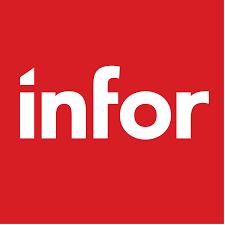
“This software focuses on catalogue management, requisition management, purchase order automation, purchasing contract, receipt and dispute management, compliance and electronic invoicing"
The Jaggaer procurement platform is conceptually built around ‘autonomous commerce’, which is a self-governing, b2b commercial experience between buyers, suppliers, the internet of things (IoT) and partners. Jaggaer offers a comprehensive SaaS-based source-to-pay eProcurement solution with advanced Spend Analytics, Sourcing, Supplier Management, Contract Lifecycle Management, Savings Tracking and intelligent workflow capabilities. Jaggaer’s solution suites are trusted by the world's largest manufacturing, education, healthcare, retail, consumer packaged goods, logistics, construction, utilities companies and public service organisations.


Basware provides some of the most advanced procurement solutions for organisations seeking to automate their procurement processes to drive user adoption, manage spend more effectively, lower processing costs, and in crease supplier collaboration.
Basware offers integrated compliance and visible commerce all through advanced cloud technology, and possesses over 2,000 software and SaaS customers in Invoice Automation and Procurement, with 900,000 active organisations transacting through the Basware supplierand-buyer network for invoices and purchase messages.

 Because
Because
The Workday procurement management platform enables organisations to easily control and automate indirect spend. It also allows for employees to create purchase requisitions, generate orders, receive goods, process supplier invoices and provide analyses, all within an integrated platform. Additionally, the platform uses machine learning to suggest relevant spend categories for hassle-free requisitions and streamlining integral processes.

Workday is geared towards cloud procurement and supports a combined group of around 1,000 customers with features such as strategic sourcing and intelligent supplier engagement.
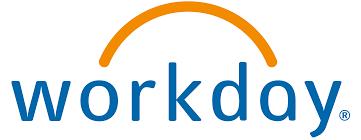


Unite Mercateo offers streamlined procurement processes that can either integrate with an organisation’s own procurement system, or be accessed through their procurement portal to fully leverage the functionality of the Unite platform.
The platform itself is designed to work seamlessly and allows companies to search for preferred suppliers with negotiated prices. Through the procurement portal, clients can ensure colleagues buy from preferred suppliers, all with a standardised P2P process. All in all, Unite Mercateo offers a flexible and customised procurement experience.


GEP is a procurement platform that prides itself on the notion that ‘Insight Drives Innovation’. Its bigdata-centric approach is focused on building a resilient, sustainable and high-performing supply chain. A unified, AI-powered system built in the cloud, with a ‘consumerised’ work environment, robotic process automation (RPA) and big data analytics, GEP is an awardwinning procurement platform that seamlessly integrates with all major ERP or back-office systems to streamline and automate the end-to-end procurement process.


The Coupa software procurement platform concentrates on ensuring user adoption and overall value, maximising spend under management and empowering organisations to gain visibility and control over their processes.
Coupa Software is proficient in cloud-based applications for procurement functions such as payments, contract management, expense management, accounts payable and invoicing, supplier relationships and risk management, contingent workforce management, treasury management, and supply chain design and planning. Coupa software takes the spot of third best procurement platform among many formidable competitors.

The Oracle Fusion Cloud procurement platform is an integrated source-to-settle (s2s) software suite that enables strategic sourcing, improves supplier relationship management, automates business processes, and simplifies the buying process.
It’s a platform that’s geared towards minimising risk while increasing savings and boosting profitability. Oracle’s analytics capabilities provide executives and category managers transparency into spend, supplier performance and operational efficiency. It fuses procurement and data, providing organisations with in-depth purchasing, spend and delivery insights.
More than 15 years in the making, the nucleus of Oracle Fusion Cloud is uninterrupted, cutting-edge innovation that leverages its 2nd generation Cloud Infrastructure to mitigate integration and implementation risks for the most complex IT and back-office environments. Built on a security-first design, with a pre-built analytics environment that includes tools such as out-of-the-box dashboards, reports, and key performance indicators (KPIs), Oracle Fusion Cloud is one of the best procurement platforms available today.




Showcase your values, products and services to your partners and customers at FINTECH LIVE LONDON 2022.

Brought to you by BizClik, FINTECH LIVE LONDON, the hybrid event held between 1st-2nd November is broadcast live to the world.
With a comprehensive content programme featuring senior industry leaders and expert analysts, this is an opportunity to put yourself and your brand in front of key industry decision makers. From keynote addresses to lively roundtables, fireside discussions to topical


Get tickets
presentations, Q&A sessions to 1-2-1 networking, the 2-day hybrid show is an essential deep dive into issues impacting the future of each industry today.
Global giants and innovative startups will all find the perfect platform with direct access to an engaged and active audience. You can’t afford to miss this opportunity.
See you on: 1st-2nd November 2022

With over 5.3 million companies being connected over SAP Ariba’s online marketplace, SAP remains the most popular business-tobusiness platform for procurement.
Its strict compliance culture means that only approved suppliers are searchable on its database, from simple to complex catalogue enablement capabilities, content normalisation, and fast, easy verification and upload times, SAP remains the most popular procurement platform.
Due to its intuitiveness in comparison to many other procurement platforms, its high level of security, and the integration of some of the latest technology in automated processes, it is a clear winner in the world of digital procurement systems.
With more than US$3.75tn in commerce flowing through the SAP Ariba Network annually, trust in the platform is growing in-line with the expansion of procurement transactions across the board. For all these reasons, from intuitive and simplified design principles to security and compliance fundamentals, SAP Ariba takes the title of ‘top procurement platform’ in our list.
“ With over 5.3 million companies being connected over SAP Ariba’s online marketplace, SAP remains the most popular business-tobusiness platform for procurement"

